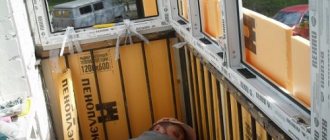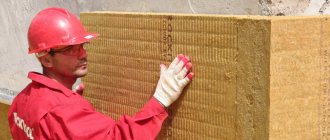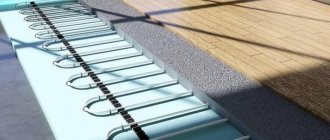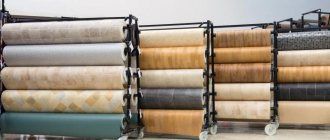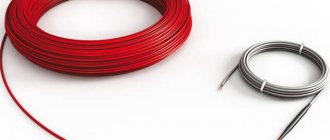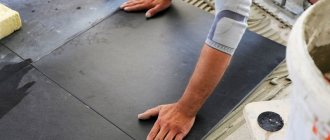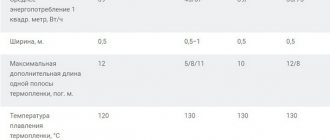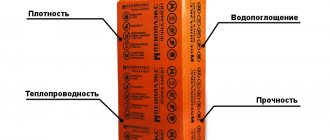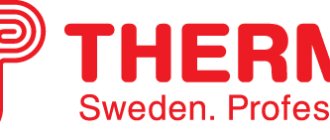Thermal insulating polymer coating ASTRATEK facade
ASTRATEK® façade is a highly viscous weather-resistant composition specially designed for thermal insulation of vertical surfaces.
The coating, applied to the wall from the inside or outside, forms a single seamless surface, retains heat throughout the entire volume of the room, which has a positive effect on the microclimate. ASTRATEK façade coating reflects up to 80% of the visible solar and infrared radiation spectrum. This leads to a significant reduction in heating of interior spaces in the summer, reducing air conditioning costs, and in cold times it can reduce heat loss by up to 30%. ASTRATEK façade coating is a durable material with high adhesion to any building materials, along with good vapor permeability. hydrophobic (water-repellent) properties.
ASTRATEK facade is used for thermal insulation of plastered, concrete, brick, wood and other surfaces of building envelopes and structures during external and internal work. ASTRATEK façade can be top coated with acrylic paint; plaster, putty, wallpaper, and ceramic tiles are allowed.
The use of ASTRATEK façade coating allows you to:
— carry out thermal insulation of walls both outside and inside;
— maintain the volume of usable area (with thermal insulation of walls from the inside);
- do not increase the load on the building structure;
— isolate facades with complex architectural solutions;
— increase the temperature comfort of the room;
— reduce costs and time for construction work.
Some examples of the use of ASTRATEK facade thermal insulation for insulating building facades
| Mamonovo, st. Evseeva 24 | Temple, Kemerovo |
| Facade, Volgograd | Private House, Novgorod |
Technical characteristics of ASTRATEK façade coating
| № | The name of indicators | Magnitude | Test method |
| 1. | Density of the material at a temperature of 20°C, kg/m3 | 630±10% | GOST R ISO 705-2003 |
| 2. | Mass fraction of volatile substances, %, no more | 53 | GOST 31939-2012 |
| 3. | Hydrogen index of the material, pH | 7,5-11,0 | GOST 28655-90 |
| 4. | Drying time and film formation to degree 3 at temperature (20±2)°C, hours, not less | 24 | GOST 19007-73 |
| 5. | Density of coating (film) at a temperature of 20°C, kg/m3 | 388±20% | GOST R ISO 705-2003 |
| 6. | Coating adhesion, points, no more | 1 | GOST 15140-78 |
| 7. | Coating adhesion by peel force, MPa, not less - to concrete and brick surfaces - to steel | 0,8 0,8 | GOST 28574-90 |
| 8. | Film elasticity when bending, mm, no more | 5 | GOST 806-73 |
| 9. | Resistance of the coating to static influence at a temperature of (20±2)°С, h, not less: water 5% alkali solution 3% sodium chloride solution | 24 8 8 | GOST 9.403-80* method A, method B |
| 10. | Resistance of the coating to temperature (200±5)°С, h, not less | 1,5 | GOST R 51691-2000 clause 9.8 |
| 11. | Thermal conductivity coefficient of the material, at a temperature of (20±5)°С, W/(m•°С) | 0,023±10% | GOST 7076-99 |
| 12. | Thermal conductivity coefficient (resulting) of the coating, at a temperature of (20±5)°С, W/(m•°С) * | 0,0012±10% | clause 5.10 TU 5768-002-62584336-2009 |
*Note: The resulting thermal conductivity coefficient is the total thermal conductivity of the coating, taking into account the boundary layer conductivity
__________________________________________________
Technology of applying thermal insulating polymer coating ASTRATEK® façade
Surface preparation
The insulated surface must be dry, free from dust, efflorescence, old chalk, lime and loose coatings, without signs of fungal infections. If necessary, loose areas should be removed, cracks should be opened, the surface should be repaired with cement-plaster compounds, and dust should be removed. Remove cement laitance on concrete surfaces mechanically or by chemical milling using the Gambit N-1 (complex) material.
To smooth out significant defects (chips, deep cracks) of the surface, it is recommended to use appropriate putties for interior or exterior work.
The coating should be applied to new concrete and plastered surfaces no earlier than 3-7 days after they have naturally dried, at a temperature of 15-20°C and normal humidity. When applied to a previously painted surface, it is necessary to remove the old paint in places of peeling and peeling. If necessary, sand with medium to coarse sandpaper.
Padding
Before applying the thermal insulation coating ASTRATEK façade, to level out the absorbency, improve adhesion and increase the service life of the finished coating, it is recommended to prime the surface with deep penetration primer GROSS façade (1-2 layers) or other high-quality acrylic primer. For weakly absorbent surfaces, such as dense hydraulic concrete, facing ceramic or silicate bricks, etc., it is recommended to use primers of the “concrete-contact” type.
Coating
When applying ASTRATEK thermal insulation coating to the facade, you should pay attention to the following points:
3.1. It is recommended to carry out coating work at a temperature of the insulated surface ranging from +5°C to + 60°C.
3.2. It is not recommended to apply the coating on surfaces with a residual humidity of more than 8-10%, in strong wind, rain, fog, or frost.
3.3. Before using ASTRATEK, the facade must be thoroughly mixed until a homogeneous mass is obtained. When mechanically mixing, the speed of rotation should not exceed 300 rpm. If necessary, dilution with clean water is allowed 3 - 7% of the total volume. The resulting composition must be stirred periodically during operation.
3.4. The coating is applied in layers with a brush, air or airless spray, subject to interlayer drying technology, at a temperature of t = 20 ± 2 ° C and above and a relative humidity of no more than 65%.
The recommended thickness of the applied layer is 0.5 mm, it is allowed to apply layers with a thickness of 0.8 - 1.0 mm on plastered, concrete and brick surfaces. The final thickness of the thermal insulation coating ASTRATEK façade is determined by the method of thermal engineering calculation. The complete drying time for each applied layer with a thickness of no more than 1.0 mm is 24 hours.
The time for complete drying of the finished coating depends on the number of layers, temperature and humidity of the surrounding air. If necessary, the interlayer drying time should be increased by 2-3 times. The coating is rain resistant after 24 hours.
3.5. Application with a brush. It is recommended to use a non-natural bristle brush for applying interior or exterior paints, as well as for painting small surfaces and correcting paint imperfections. Immediately before applying the material, wet the brush with water. When applying with a brush, to obtain a high-quality coating, movements should be directed in one direction.
3.6. Application with a spatula. On some types of highly absorbent surfaces, such as plaster, putty, porous concrete, etc., ASTRATEK facade can be applied with a spatula, no more than 0.8-1.0 mm thick. Recommendations for applying coating with air or airless spray, as well as the necessary advice on selecting the necessary equipment, can be obtained from our technical specialists by phone.
After application, rinse working tools with water.
You can apply GROSS facade, GROSS interior acrylic paints, or other high-quality acrylic paints to the finished coating.
In conditions of high humidity, as well as to increase the service life of the coating, it is recommended to apply water-based water repellents to the finished coating.
Tinting
The base color of the coating is white, gray. It is not recommended to do tinting yourself, due to the possible deterioration of the properties of the coating. If necessary, you can order material tinted in pastel colors at the manufacturer according to most European tinting systems.
Consumption
The consumption of ASTRATEK facade thermal insulation coating depends on the method of application, the roughness and porosity of the surface, its shape and is more accurately determined by test application. The average consumption is: 1-1.3 l/m2, depending on the method of application and the properties of the insulated surface (with a thickness of the finished coating of 1 mm).
Precautions and disposal
Thermal insulating polymer coating ASTRATEK façade is fireproof and explosion-proof, does not contain solvents, and does not require special precautions when handling it. In case of contact with eyes, rinse them immediately with water. Do not allow to enter wastewater. Keep out of the reach of children. Carry out work in a ventilated area. After drying, dispose of any remaining material as household waste. The material is water-soluble; the addition of organic solvents is not allowed.
Storage and transportation
Thermal insulating polymer coating ASTRATEK façade should be stored in a tightly closed container at a temperature from + 5°C to + 35°C, away from direct sunlight. Material marked “frost-resistant” can be transported and stored at temperatures down to -40°C for one month. 5 freezing cycles are allowed.
Manufacturer's Warranty
The manufacturer guarantees that ASTRATEK facade thermal insulating polymer coatings comply with the technical characteristics when following the rules of transportation, storage, preparation and application, which are given in these recommendations and technical descriptions for each specific type of coating. Guaranteed shelf life in original, unopened packaging is 12 months from the date of production. The manufacturer is not responsible for the incorrect use of the material, as well as for its use for other purposes and conditions not provided for in the technical documents. Professional technical advice, necessary documentation, information about the features of using each specific type of thermal insulating polymer coating can be obtained from technical support specialists by calling: +7.
Consumption
(1.0 – 1.6) l/m2 depending on the condition of the base and method of application
Delivery form
Plastic buckets 3 l, 10 l, 20 l.
_____________________________________________________
Types of Asstratek thermal insulation and application technology
Asstratek is easily sprayed with a spray bottle.
The price of thermal insulation does not differ much, but there are nuances in the composition that should be taken into account before use. First you need to familiarize yourself with the types of liquid thermal insulation Asstratek, reviews of which only encourage you to purchase this material for protection. Varieties:
“Facade” is used for insulation of apartments or private houses, for cladding walls outside and inside. It is used for walls and facades of buildings that are characterized by high humidity. Also used on any plastered surface. We have previously talked about how to insulate the facade of a house yourself.
In rooms with high humidity, it is recommended to use Asstratek Metal, which provides excellent protection against corrosion.
Liquid insulation Asstratek decor-acoustic has a special feature - it absorbs and dissipates sound waves by almost 40%. This type is used primarily for interior wall decoration. Asstratek universal is suitable for insulating any surface: wood, metal, concrete, brick and other materials. Suitable for both external and internal work. Provides thermal protection within the range from -60 to +200 degrees.
Astratek insulation is applied using the following technology:
- the surface is prepared;
- padding;
- coating is applied;
- wait until the material dries completely;
- applying the following layers (up to 15 are allowed).
To prepare the coating, it should be cleaned of visible dirt. It could be dust, or pieces of plaster falling off. If there are cracks on the wall, they must be covered with putty. After it has completely dried, everything is thoroughly rubbed and cleaned. Priming is extremely important to improve adhesion. For this, a primer is used, which is applied to the surface with a brush or roller. For reliability, apply 2 layers. After the preparatory work, Asstratek is diluted with water in a ratio of 1:5 and thoroughly mixed. Then the insulation is applied to the wall with a paint brush. The technology is similar to using regular paint. Ceiling insulation with this material can be viewed in the video:
It is recommended to apply the material in one direction only. Sharp strokes in different directions will return the mixture back to the brush. The layer should not exceed 0.5 mm. After the material has completely dried, a second layer is applied. It must be remembered that each subsequent layer is applied only after the previous one has completely dried.
The two main advantages of polypropylene pipes for heating are technical characteristics and ease of installation.
Where tees are used for heating pipes and for what purpose is described here.
Possible errors when applying ASTRATEK® thermal insulation coating
Below are examples of incorrect application that caused incorrect operation and peeling of the coating.
Peeling and peeling of the coating
At this site, GF series soil was used. This material is not recommended for use with ASTRATEK® coating. In addition, this soil turned out to be of inadequate quality and did not meet the required characteristics. As a result, the finished ASTRATEK® coating separated from the surface of the object along the mass of the soil, which indicates its insufficient cohesive strength.
It is necessary to carefully monitor the correct preparation of the surface and use only accompanying materials strictly recommended by the manufacturer.
Peeling and cracking of the coating
At this site, GF series primer and PF paint were used as a finishing coating. Both materials are not recommended for use with ASTRATEK® coating. Delamination and peeling also occurred between the layers of the soil itself, which indicates its poor quality. The use of an inappropriate finish resulted in cracking of the top layer. It is necessary to carefully monitor the correct preparation of the surface and use only accompanying materials strictly recommended by the manufacturer.
Blistering and cracking of the coating
The coating was applied too thickly in one pass. When coating hot surfaces with a layer of 0.5 mm in one pass, part of the water remains inside the layer. At high temperatures of the insulated object inside the coating layer, the remaining water turns into steam, resulting in the formation of a bubble. The bubble contains the resulting steam, and as the coating dries, the bubble swells more and more. As a result, the pressure inside the bubble increases and it may burst. To avoid this problem, apply the material to hot surfaces in successive thin layers (0.25 mm) with at least 24 hours of drying between coats.
Coating cracking
The coating was applied in summer in too thick, uneven layers. High ambient temperatures significantly accelerate water evaporation and curing. In this case, only the top layer dries and “slams” water vapor inside, which worsens the thermal insulation and performance characteristics of the material and cracking of the coating occurs. To avoid this problem, apply the material to hot surfaces in successive thin layers (0.25 mm) with at least 24 hours of drying between coats.
Once again, please note that ASTRATEK® is not a paint, but a special coating, so application must be carried out by specialists who have been trained in working with the coating, and if this is not possible, then you must strictly adhere to the application instructions and all recommendations of the manufacturer or authorized supplier of the material.
Only in this way is it possible to ensure smooth and uninterrupted operation of the finished ASTRATEK® coating. Other materials
- ASTRATEK NG non-flammable
- ASTRATEK metal
- ASTRATEK station wagon
- ASTRATEK liquid thermal insulation
- Bronya Facade thermal insulation
- Armor Anticorrosive thermal insulation
- Bronya Classic thermal insulation
- Thermal insulation Bronya Classic
Types of coatings with thermal insulation effect
The three main types of liquid thermal insulation under this brand are metal, universal and facade. Additionally, in some cases, you can buy mastic with a special composition.
The choice is made in favor of the universal Asstratek when ordinary structures made of plastic, concrete, wood, brick, metal, etc. need insulation. The insulator is used to treat surfaces not only inside, but also outside the room. The product is available in two colors: gray and white, and can be used at temperatures from −60 to +200 degrees.
As an insulation material for metal surfaces, it is worth choosing Asstratek metal, which demonstrates an improved ability to contact metal surfaces, preventing the formation of corrosion, and showing resistance to various types of chemical compounds.
The material is available in one color option - gray, suitable for finishing metal structures and products, pipes and industrial equipment. It will protect not only from corrosion, but also from excess condensation.
The Asstratek facade is characterized by a special composition that makes the material resistant to precipitation after application to external walls. The mastic exhibits increased viscosity and lays in an ideal layer on vertical and horizontal surfaces without forming seams. In addition, insulation with material guarantees a comfortable microclimate inside the room.
A noteworthy product from Astratek is NG paint, which means non-flammable. The coating is resistant to high temperatures, steam, and precipitation, and is suitable for providing reliable thermal insulation of all types of surfaces, both inside and outside.
Another useful option for liquid thermal insulation is Asstratek all-season. The product is designed for thermal insulation of structures and objects, including at low temperatures (down to −30 degrees). The finished insulator layer is resistant to atmospheric agents and steam, contains corrosion inhibitors, and is resistant to ultraviolet radiation.
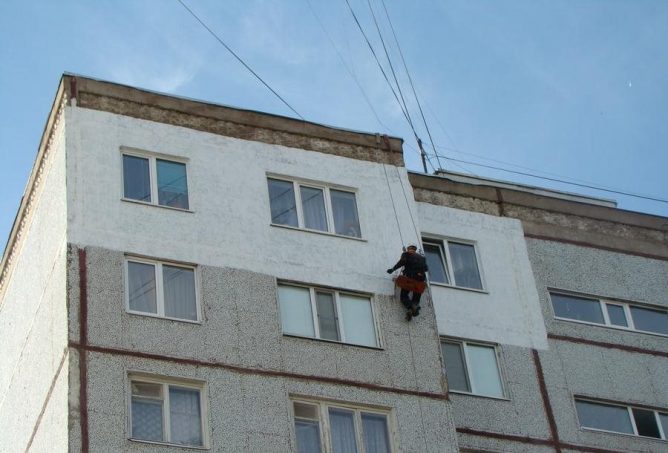
And the last version of the product from the line presented by Astratek is decor-acoustic. It is almost impossible to find a material with similar properties in the range of liquid thermal insulation from other manufacturers. The product has been specially developed to improve room acoustics while increasing thermal insulation properties.
The manufacturer claims a 40% reduction in reverberation duration with a reduction in the power of sound waves and a guarantee of pure natural sound, which is especially important for specialized rooms, such as gyms, recording studios, concert halls, etc.
In conclusion, it is worth noting that Asstratek’s liquid thermal insulation products deserve their leading position in the market, fully meeting the requirements for a wide range, environmental friendliness, safety and a number of performance characteristics.
